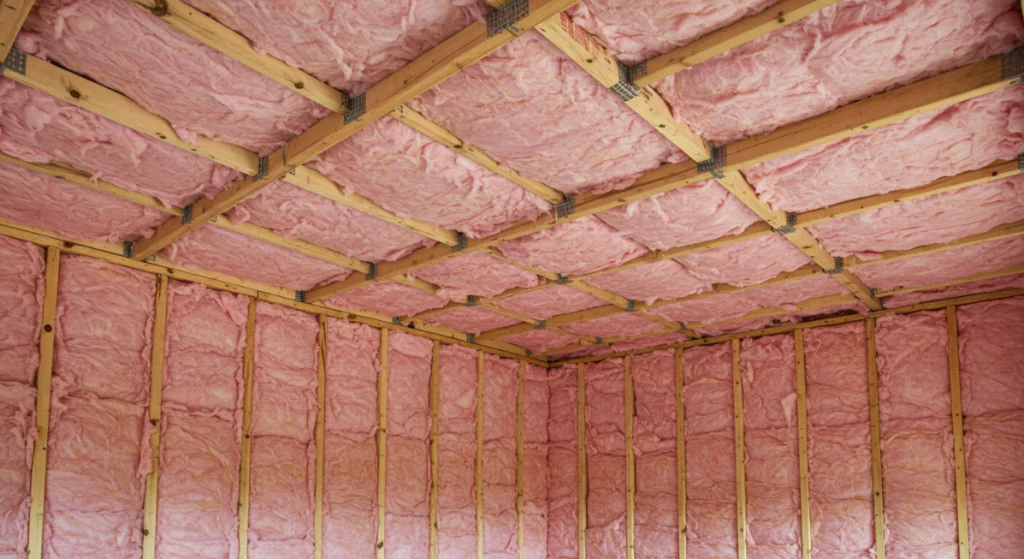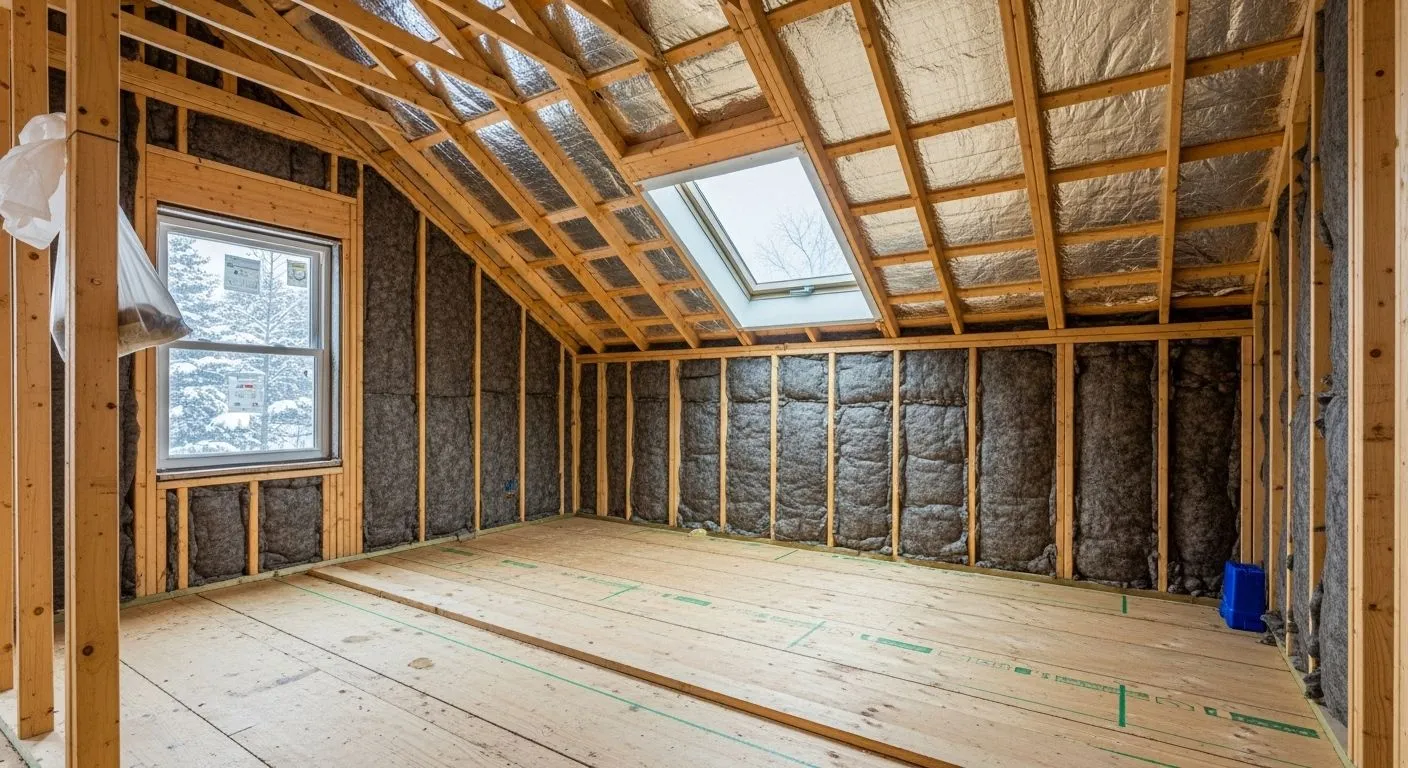Cold floors in homes often stem from a lack of proper insulation, particularly in regions with harsh winters like Sioux Falls, South Dakota. Heat escapes through uninsulated floors, especially in crawl spaces or basements exposed to outdoor temperatures. This issue leads to noticeable chill underfoot and higher energy bills as heating systems work harder to compensate. Proper insulation acts as a barrier, trapping warmth inside and keeping cold air at bay.
This article, drawing from extensive work with insulation projects in South Dakota including Sioux Falls weather patterns, explores reasons behind cold floors, how insulation helps, and steps to address the problem, providing a clear understanding of symptoms, options, and factors to weigh.
Why Floors Feel Cold in Winter
Heat loss through floors happens mainly via conduction, where cold from the ground or outside air transfers directly to indoor surfaces. In older homes or those built without modern standards, gaps in floor joists or thin subflooring allow this transfer. Drafts from unsealed edges worsen the effect, pulling in frigid air.
Sioux Falls sees average January lows around 5°F, according to data from the National Weather Service. Such extremes make floors a prime spot for heat to vanish, dropping indoor temperatures by several degrees. Without insulation, homes lose up to 25% of heat through floors and walls.
How Insulation Prevents Cold Floors
Insulation materials fill spaces under floors to slow heat movement. Fiberglass batts, spray foam, and rigid foam boards each create a thermal break. Spray foam, for instance, expands to seal cracks, stopping air leaks that carry cold.
In Sioux Falls, where soil freezes deeply in winter, ground contact amplifies the chill. Insulation raises the R-value, a measure of resistance to heat flow, helping maintain even temperatures. A home with R-30 floor insulation can cut heat loss by half compared to uninsulated setups.
Bonus Tip: Check for moisture in crawl spaces first, as damp insulation loses effectiveness quickly in the local humid summers.
Impact of Sioux Falls Climate on Floor Temperatures
The area’s continental climate brings sub-zero winds and rapid temperature swings, stressing floor systems. Homes on slabs or over unheated basements face direct exposure to frozen earth, which stays cold until spring thaw.
Local building codes require minimum R-19 for floors in new constructions, per South Dakota standards aligned with International Energy Conservation Code. Yet many older Sioux Falls homes fall short, leading to persistent cold spots. Energy consumption data shows South Dakota households spend 15% more on heating than the national average, partly due to poor floor insulation, according to the U.S. Energy Information Administration.
In such conditions, this setup creates uneven warmth, particularly in bathrooms and kitchens often feeling coldest due to tile or hardwood over uninsulated subfloors.
As part of its continued effort to meet growing demand for insulation solutions, Foam Worx Insulation recently shared details of its market expansion. You can learn more in their official release: Spray Foam Insulation Contractor Extends Services to New Markets

Signs That Insulation Causes the Cold
Look for icy drafts near baseboards or floors that stay cool even after hours of heating. Uneven temperatures across rooms signal spots where insulation has settled or deteriorated over time. Higher utility bills during peak winter months also point to this issue.
Touch-test different areas: carpeted spots might mask the problem, but bare concrete or wood reveals the truth. In Sioux Falls, frost patterns on windows paired with cold floors often indicate whole-home insulation gaps.
Bonus Tip: Use an infrared thermometer to map cold zones; this tool reveals hidden weak points without tearing up floors.
Types of Insulation for Floors
Different materials suit various floor setups. Below is a comparison of common options used in South Dakota homes.
| Insulation Type | R-Value per Inch | Best For | Cost Range (per sq ft) | Pros | Cons |
|---|---|---|---|---|---|
| Fiberglass Batts | 3.1-4.3 | Attics and open joists | $0.50-$1.00 | Easy to install, affordable | Can sag over time, needs vapor barrier |
| Spray Foam (Closed-Cell) | 6.0-7.0 | Crawl spaces, sealing gaps | $1.50-$3.00 | High insulation, airtight | Higher upfront cost, requires pro application |
| Rigid Foam Boards | 3.8-5.0 | Slab edges, basements | $0.75-$1.50 | Moisture resistant, cuttable | Labor-intensive to fit |
| Blown-In Cellulose | 3.2-3.8 | Existing floors | $1.00-$2.00 | Fills irregular spaces | Settles if not installed properly |
Choose based on access and budget. Spray foam excels in sealing Sioux Falls’ drafty older homes.
Bonus Tip: For radiant floor heating, pair it with insulation to boost efficiency by 20-30% in cold climates.
Things to Consider Before Making a Decision
Assess home age and construction type first. Slab foundations need perimeter insulation, while crawl spaces demand ventilation checks to avoid mold. Budget for professional inspection, as DIY errors can trap moisture.
Factor in long-term savings: Insulation payback comes in 3-5 years through lower heating costs. Review local rebates from utilities like Xcel Energy, which offer up to $500 for floor upgrades in South Dakota.
Weigh health impacts too; cold floors can lead to discomfort or slips on condensation. Consult building codes to ensure compliance during renovations.
Common Questions
Are There Any Quick Fixes for Cold Floors?
Homeowners frequently ask about quick fixes. Temporary rugs help, but they don’t solve underlying heat loss. For lasting results, target the insulation directly.
Does Floor Insulation Help With Noise Reduction?
Another concern involves noise: Insulating floors can also dampen sound transmission in multi-story homes, adding unexpected benefits.
Key Takeaways
Lack of insulation directly causes cold floors by allowing heat to flee to the cold ground below. In Sioux Falls, the severe winters make this problem acute, raising bills and discomfort. Options like spray foam offer effective seals, while considerations like home layout guide choices.
Evaluate current setup, check for drafts, and calculate potential savings. Match solutions to specific needs and goals for lasting warmth.
Next Steps for Warmer Floors
Contact Foam Worx Insulation at [email protected] or call (507) 407-6688 to discuss options tailored to Sioux Falls homes. Schedule an assessment to identify exact needs and explore energy-efficient upgrades. This step ensures targeted improvements without guesswork.
Frequently Asked Questions About Cold Floors and Insulation
Does Adding Rugs Fix Insulation Issues?
Rugs provide minor warmth but fail to stop heat from escaping below. They trap some heat at the surface, yet cold air still infiltrates from gaps. Address the root cause with proper underfloor barriers for real improvement.
How Much Does Insulation Cost in Sioux Falls?
Costs range from $1 to $3 per square foot, depending on material and access. A 1,000 sq ft home might total $2,000-$4,000 installed. Factor in energy savings of $200-400 yearly to offset the expense.
Can Insulation Be Added Without Major Renovations?
Yes, blown-in or spray methods work through small access points in crawl spaces or attics. Avoid drilling into finished floors; opt for non-invasive techniques to minimize disruption.
Is Floor Insulation Worth It in Mild Winters?
Even with occasional mild spells, Sioux Falls winters justify it. Savings compound over seasons, and comfort improves year-round. Data shows 10-15% overall energy reduction post-installation.
What If the House Has a Finished Basement?
Insulate between joists from above or use rigid boards on walls. Ensure airflow to prevent humidity buildup, common in South Dakota’s variable weather.
Sources
- National Weather Service – Climate data for Sioux Falls, providing average temperatures to illustrate winter severity.
- International Energy Conservation Code – Building standards for energy efficiency, relevant to South Dakota floor requirements.
- U.S. Energy Information Administration – Residential energy consumption reports, showing heating costs in South Dakota.
- Xcel Energy – Utility rebate programs for insulation, offering financial incentives in the region.




